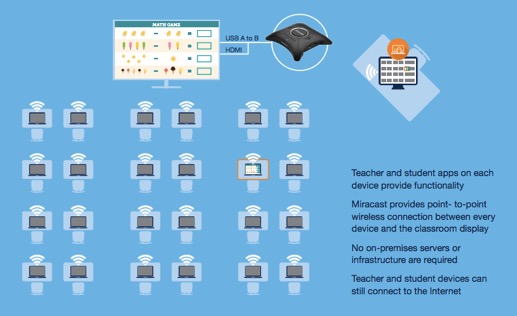The classroom structure has not seen much change over the years. For generations, we’ve seen the same desks arranged in a grid of rows and columns. The teacher typically stands at the front of the room and teaches from one location. Yes, there is newer technology in the classroom, but how class is taught is not all that different from how it was traditionally taught back in the day. If we place a teacher who taught decades ago in today’s classroom, there would still be a clear understanding of the current classroom framework. However, take your average working person from decades ago and put them in a modern workspace, and they wouldn’t even know where to start. So, how can we expect children to survive in the modern workplace if we are still teaching class the traditional way?
The need to modernize our learning spaces is not just another nice thing to do for our classrooms, it’s a necessity. So what does a modern learning space look like?
5 Key Ways Schools Are Creating Modern Learning Spaces
1. Flexible seating
In today’s modern classroom set-up, educators tend to favor flexible seating arrangements over traditional classroom layouts to create a more collaborative working environment for students. Flexible seating supports classroom agility, allowing students to sit where they want, whether it be a bean bag near a window or a yoga ball on the other side of the room.
2. Shared Control
Creating a space where everyone can be more comfortable puts students in the right mindset to learn. Educators are encouraging students to sit where they like, choose who they work with, and move furniture around. All these elements provide a sense of shared control over the space.
3. School Supplied Devices
Accessibility to proper technology is important in modern learning spaces. Having access to laptops, for example, allows teachers to better utilize mobile learning and wireless display during class time, which in turn allows students to sharpen their technology skills. Classrooms with access to laptops also depend less on textbooks, leading students to take on a more explorative approach when it comes to learning. The freedom students have to independently research topics also encourages them to communicate and debate openly amongst each other, which again promotes a more collaborative working environment.
A study on laptop use in high schools in Maine showed that 71 percent of students felt an improvement in their personal technology skills due to their access to laptops. The study also found that out of the total teachers surveyed, 68 percent claimed that their students utilized classroom laptops to study topics on their own.
4. Infrastructure to Support the Digital Age
It’s hard to teach kids technology if they can’t get their hands on it. The modern learning space gives educators more instructional time, not more distractions. Teachers should not have to “think” about the technology they are using, it should just work.
With newly available $189 Windows laptops, schools are eager to provide each student with a dedicated device. Thinking about the practical application here is so important. Do classrooms have enough outlets? How will we manage cord control? Will there be a dedicated charging station? How will we support wifi throughout all buildings on school grounds? These are all questions superintendents and IT professionals will need to consider as they create modern learning spaces.
5. Classroom Orchestration
With technology like ScreenBeam Classroom Commander, educators can produce excellent learning experiences by combining wireless display connectivity and classroom orchestration functionality. Rather than being tied to a stationery computer or projector, teachers can walk around the classroom and interact with students, all while keeping students engaged in the lesson and orchestrating control of student devices. This is particularly efficient in a 21st century classroom where every student will be equipped with a smart device.
In addition, disruptive classroom behaviors can be kept to a minimum as teachers are able to exercise proximity control more effectively with Classroom Commander. While it’s great that students have the freedom to easily engage in independent research, teachers should be mindful that this freedom could also lead to distractions and inappropriate internet use as well.
Modern learning spaces, just like the modern workplace, should be fluid, flexible, and should foster collaboration and communication. The ideal environment should minimize distractions and maximize instruction. Educators should have access to the proper tools that allow them to be agile around the classroom. When we give students access to the relevant tools they need to succeed in today’s modern classroom, we help set them up to succeed in today’s modern workplace.

Jay is Senior Director of Technical Marketing at ScreenBeam.

